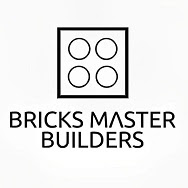LEGO bricks are more than just colorful squares – they're a gateway to a world of creative engineering. With a combination of standard LEGO pieces and specialized Technic components, builders can bring their creations to life through the magic of mechanisms.
LEGO mechanisms are essentially moving parts within a build. These mechanisms use various principles of physics and engineering to achieve specific functions. Here are some popular types of LEGO mechanisms:
- Gears: The workhorses of LEGO movement, gears transfer power and change speed and direction. By combining different sized gears, builders can create gear ratios that make their creations move faster, slower, or even reverse direction.
- Axles and Beams: These form the framework for movement, providing a stable structure for gears, wheels, and other moving parts to rotate or slide upon.
- Linkages: These clever contraptions use connected bars and pivots to translate one type of movement (like pushing or pulling) into another. For example, a crank and slider linkage can convert circular motion into linear motion.
- Pneumatics: For a more complex build, LEGO Technic offers pneumatic components like pumps and cylinders. These allow builders to create models powered by compressed air, opening doors, extending cranes, or even firing pistons.
- Differentials: These gear mechanisms are essential for vehicles, allowing the wheels on each side of an axle to rotate at different speeds when cornering.
The possibilities with LEGO mechanisms are endless. Here's why they're so engaging:
- Hands-on Learning: Building mechanisms encourages exploration of scientific concepts like force, motion, and cause-and-effect. Kids (and adults!) can learn valuable STEM principles in a fun and interactive way.
- Boosting Creativity: Mechanisms allow builders to go beyond static models and create truly dynamic creations. From walking robots to self-propelled cars, the possibilities are limited only by imagination.
- Problem-Solving Skills: Designing and building functional mechanisms often involves trial and error. This process helps develop critical thinking and problem-solving skills as builders troubleshoot and refine their creations.
Whether you're following instructions for a specific model or inventing your own mechanisms from scratch, LEGO offers a world of possibilities for exploring movement and engineering. So dive in, grab your bricks, and get ready to build something truly remarkable!


No comments:
Post a Comment